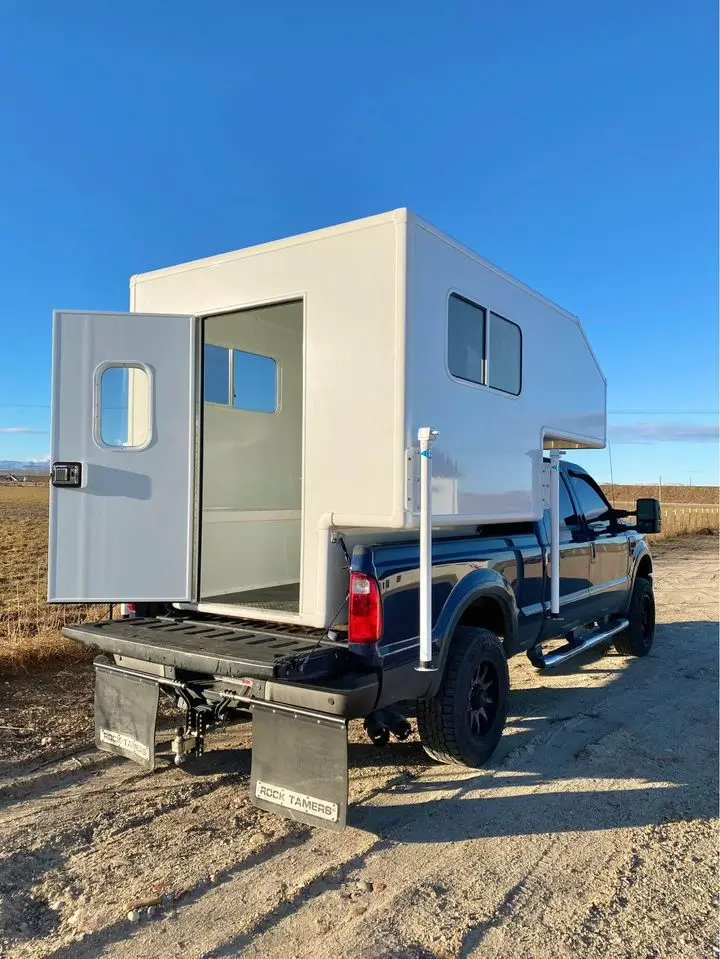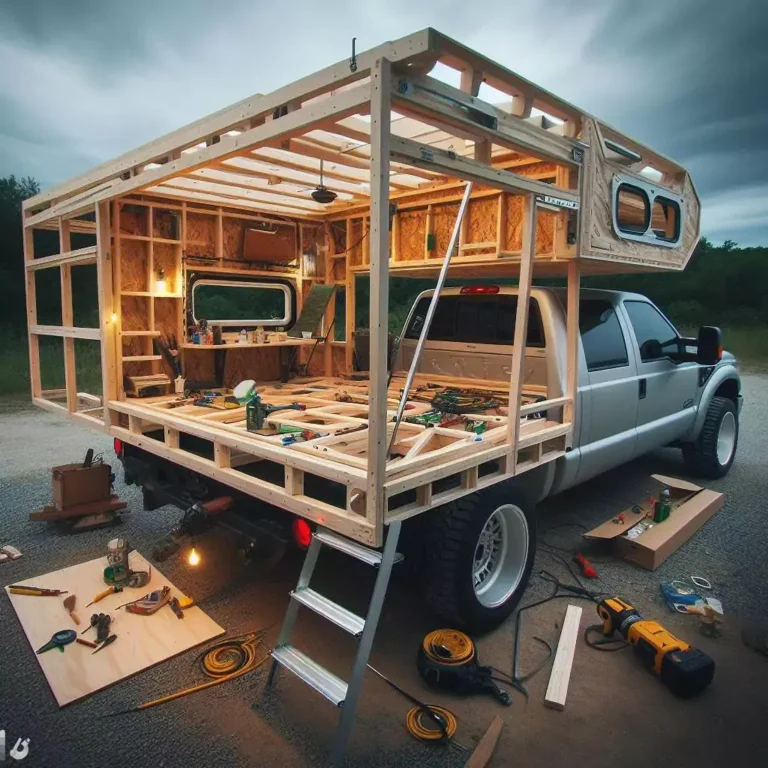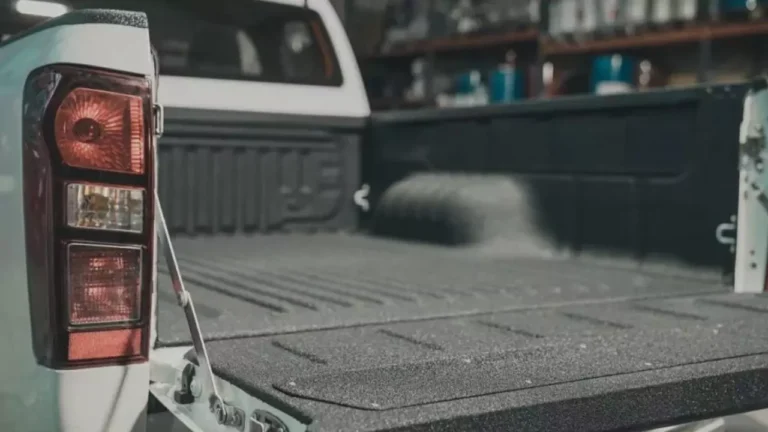Build Lightweight Truck Camper Shell: A Complete Step-by-Step Guide for Beginners
A camper shell is a valuable accessory for a pickup truck, providing shelter and storage for camping trips. However, traditional camper shells can be heavy and cumbersome, adding unnecessary weight to your vehicle. In this guide, we will outline the steps involved in building a DIY lightweight truck camper shell that is both durable and lightweight.
How to Build a Lightweight Truck Camper Shell?
Building a lightweight and portable truck camper shell can be a rewarding project. Following these steps, you can create a durable and functional camper shell that enhances your camping experience without adding excessive weight to your vehicle.
Step 1: Design the Shell
Start by designing the shell of your camper. Consider the dimensions of the truck bed and the features you want to integrate. Consider options such as a roof rack for mounting accessories, a storage compartment, and a window or skylight for natural light. Also read our article on “how to measure your truck bed?”.
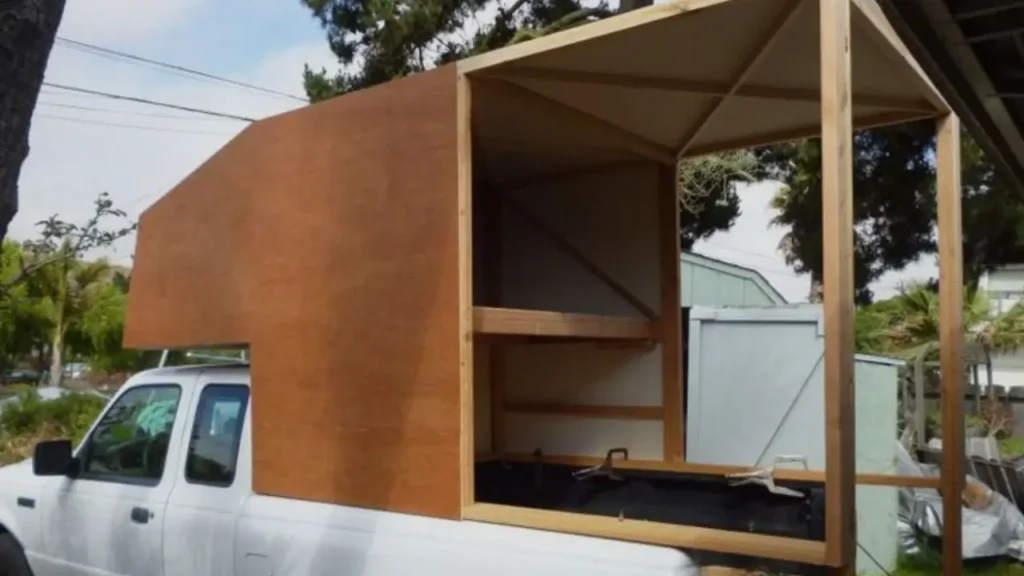
Step 2: Choose the Material
To build a lightweight camper shell, it is essential to choose a suitable material. Consider materials such as aluminum, fiberglass, or lightweight composites. These materials are solid and durable while being lightweight.
Step 3: Cut the Shape of the Shell
Once you have designed the shell, you must cut it to the appropriate shape for your truck’s bed. This can be done using a jigsaw, circular saw, or other cutting tools. Ensure that the cuts are precise and align with the contours of the truck bed.
Step 4: Assemble the Components
Start assembling the shell by attaching the sides, top, and bottom components. Use hardware such as screws or rivets to secure the pieces together. Ensure that all edges are sealed to prevent any leaks.
Step 5: Insulate and Ventilate
Insulate the shell to ensure a comfortable climate inside the camper. You can use foam insulation or specialized composite materials for this purpose. Additionally, consider adding vents or windows for ventilation and airflow.
Step 6: Install Doors and Windows
Install doors to provide access to the camper shell. Consider using lightweight doors made from aluminum or composite materials. Additionally, install windows or skylights to provide natural light and ventilation.
Step 7: Finish and Detailing
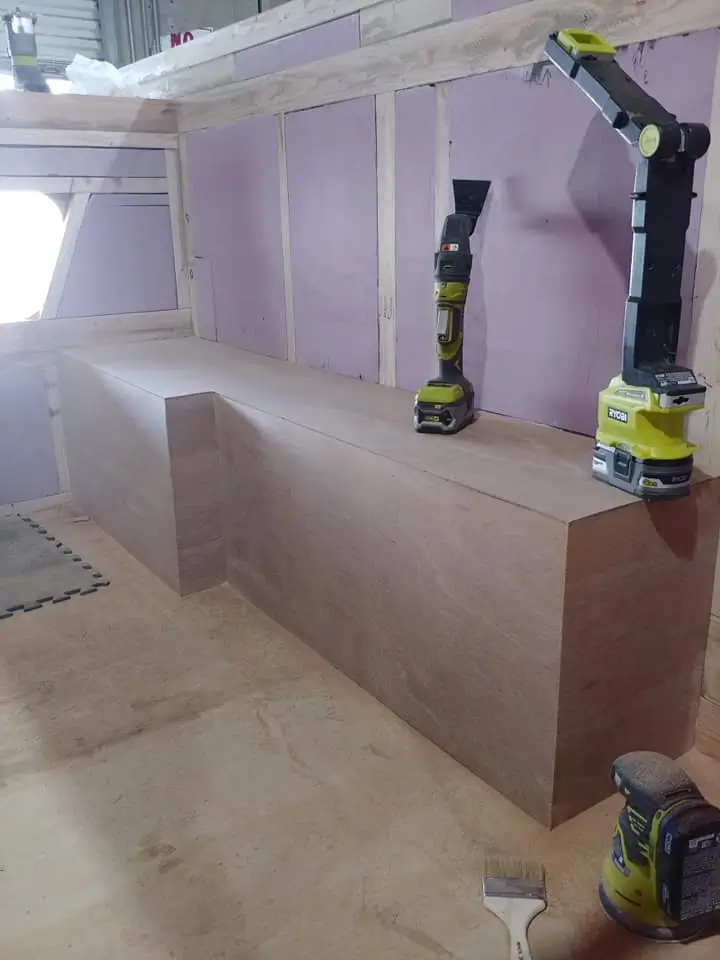
Once the assembly is complete, finish the shell with paint or a sealant. You can also add decorative elements like trim, lights, or decals to personalize the camper shell.
Materials Needed to Build a Lightweight Truck Camper
A lightweight truck camper shell is a practical accessory that provides shelter and protection for the bed of a pickup truck. It is typically made from lightweight materials that enable easy installation and removal. Here are some commonly used materials to build a lightweight truck camper shell:
Aluminum
Aluminum is popular for lightweight camper shells due to its high strength-to-weight ratio. It is corrosion-resistant and can be easily fabricated into different shapes and designs. Aluminum camper shells offer durability and stability while being lightweight.

Fiberglass
Fiberglass is another popular material for camper shells. It is strong, lightweight, and can be molded into intricate designs. Fiberglass camper shells provide excellent insulation and are resistant to rot and mold.
Composite Panels
Composite panels, such as carbon fiber or honeycomb panels, offer a lightweight and strong solution for camper shells. These panels are sandwiched together using lightweight cores, such as foam or honeycomb, enhancing their strength and structural integrity. Composite panels provide a sleek, modern look to camper shells.
ABS Plastic
ABS plastic, also known as Acrylonitrile Butadiene Styrene, is a versatile thermoplastic polymer that is commonly used in camper shells. It is lightweight, durable, and can be molded into various shapes, making it suitable for customizing camper shells. ABS plastic camper shells are weather-resistant and easy to clean.
Steel
While steel is not typically associated with lightweight materials, it can be a viable option for truck camper shells. Steel camper shells provide strength and durability, making them suitable for off-road or heavy-duty applications. However, steel camper shells can be heavier and may require additional installation hardware.
Wood
Wood is a traditional material used for camper shells, especially for older models. It offers a rustic charm but requires regular maintenance to prevent rot and decay. Wood camper shells can be heavier and more susceptible to damage if not properly treated.
Composite Fiberglass
Composite fiberglass is a combination of fiberglass and resin. It offers the strength of fiberglass with the flexibility and aesthetics of plastic. Composite fiberglass camper shells are lightweight, durable, and can be customized to suit the individual needs of the owner.
Common Issues with Aluminum Truck Camper Shells
Aluminum truck camper shells are famous for pickup truck owners due to their durability, lightweight, and customization options. However, as with any vehicle accessory, some common issues can arise with aluminum camper shells.
Corrosion
Aluminum is a lightweight metal that is highly resistant to corrosion. However, over time, exposure to certain elements can lead to corrosion. Aluminum camper shells can rust when moisture, salt, and harsh chemicals are exposed. It is essential to regularly inspect and clean the camper shell to prevent corrosion and maintain its structural integrity.
Dents and Scratches
Aluminum camper shells are lightweight and can be susceptible to dents and scratches. Storing and transporting the camper shell is essential to preventing damage. Additionally, investing in a cover or protective padding can help protect the shell from accidental impacts.
Leakage
Leakage is a common issue that can occur with aluminum camper shells. Moisture can seep into the shell, leading to mold, mildew growth, and interior damage. Sealing all seams and joints carefully is essential to prevent leakage, and regularly inspect the camper shell for any signs of leaks.
Loose or Damaged Fasteners
Over time, the fasteners that hold the camper shell in place can become loose or damaged. Also, this can make the shell unsecured, increasing the risk of damage during transportation or storms. Regularly inspect the camper shell’s fasteners and tighten or replace any loose or damaged.

Rusting Components
Although aluminum is corrosion-resistant, specific components within the camper shell can still rust over time. Also, this includes hinges, locks, and any other metal components exposed to the elements. Regular maintenance, such as cleaning and lubricating hinges, can help extend the life of the camper shell’s components and prevent rusting.
Insulation and Temperature Control
Aluminum camper shells may have issues with insulation and temperature control. Aluminum is a poor conductor of heat, which can lead to warm or cold conditions inside the camper shell. Investing in insulation materials or adding a heater or cooling system can help address this issue.
Maintenance and Repair Costs
Aluminum camper shells require regular maintenance and may require repairs at some point. The cost of maintenance and repairs should be considered before purchasing an aluminum camper shell. It is essential to clearly understand how much time and money will need to be invested to keep the camper shell in good condition.
How to Determine the Weight Capacity of a Truck Camper Shell?
There are several factors to consider when determining the weight capacity of a truck camper shell. Below are some observations based on the search results:
Truck Payload:
Trucks can carry a maximum payload, specifically in the cab, truck bed, or cargo area, representing their ability to haul cargo and passengers safely. If you want to know your truck’s payload capacity, take it to an automated truck scale for an accurate weight measurement.
Camper Weight:
You should add the weight of all optional equipment (both factory- and dealer-installed) to the dry weight of the camper that the manufacturer provides. Additionally, include the weight of supplies, personal belongings, and other cargo in the camper or truck.
.
Weight Distribution:
The camper’s weight must be evenly distributed evenly for a truck bed not to be overloaded on one side. To ensure proper weight distribution, it is also essential to consider the camper’s center of gravity.
Material Choice:
The choice of materials for the camper shell can impact the weight capacity of the truck. Lightweight materials such as aluminum or fiberglass can help keep the weight down, while heavier materials like wood may reduce the car’s weight capacity.

